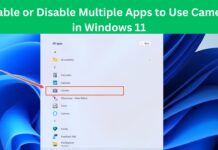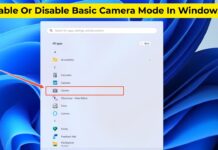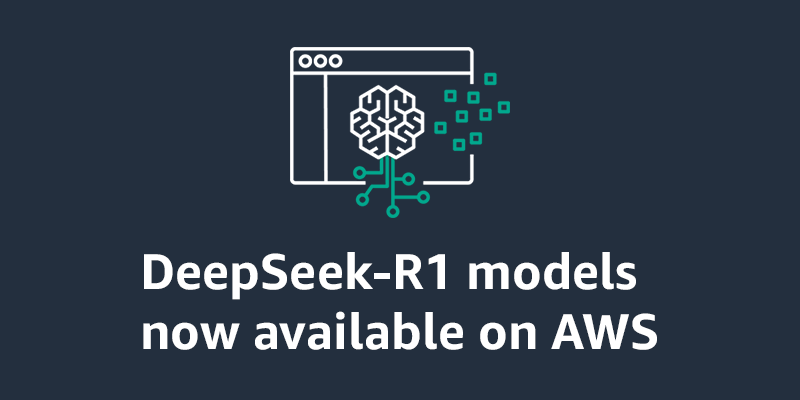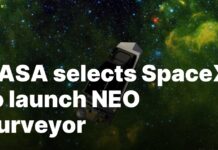During the recent Amazon Web Services (AWS) re:Invent conference, Andy Jassy, the CEO of Amazon, shared some insightful lessons from the company’s extensive journey in developing almost 1,000 generative artificial intelligence (AI) applications. These experiences have significantly influenced Amazon’s approach to implementing AI in enterprise settings. Jassy highlighted three critical observations that have guided Amazon’s strategy.
The first observation is the importance of computing costs when scaling up generative AI applications. There is a strong demand for better price performance in AI solutions. The second observation is the complexity involved in building a high-quality generative AI application. Creating these applications is not a simple task and requires sophisticated techniques and resources. The third observation is the variety of models employed when developers are given the freedom to choose their tools. This diversity is expected, as there is no single tool that can meet all needs.
Jassy emphasized that Amazon’s broad and comprehensive range of models allows customers to select the most suitable tools for their specific requirements. By keeping a close watch on both customer needs and technological advancements, AWS continuously updates its curated selection of models. This includes integrating promising new models alongside established industry favorites, which helps customers remain at the forefront of AI innovation.
One company that stands out in this space is DeepSeek, a Chinese AI startup that has made significant strides in AI model development. DeepSeek introduced their DeepSeek-V3 model in December 2024, followed by the release of DeepSeek-R1, DeepSeek-R1-Zero, and DeepSeek-R1-Distill models in January 2025. These models range from 1.5 to 70 billion parameters, with the DeepSeek-R1-Zero boasting an impressive 671 billion parameters. DeepSeek also released their vision-based Janus-Pro-7B model in January 2025. These models are publicly accessible and reportedly offer a cost advantage of 90-95% over similar models, primarily due to innovative training techniques like reinforcement learning, which enhance their reasoning capabilities.
Now, you can deploy DeepSeek-R1 models using Amazon Bedrock and Amazon SageMaker AI. Amazon Bedrock is ideal for teams looking to quickly integrate pre-trained foundational models through APIs, while Amazon SageMaker AI is suited for organizations that require advanced customization, training, and deployment options. Furthermore, you can leverage AWS Trainium and AWS Inferentia to deploy DeepSeek-R1-Distill models more cost-effectively using Amazon Elastic Compute Cloud (Amazon EC2) or Amazon SageMaker AI.
With AWS, you have the opportunity to build, experiment, and responsibly scale your generative AI ideas using the DeepSeek-R1 models, which are both powerful and cost-efficient, requiring minimal infrastructure investment. By utilizing AWS services designed with security in mind, you can confidently drive innovation in generative AI. It’s recommended to integrate your deployments of DeepSeek-R1 models with Amazon Bedrock Guardrails to enhance the safety of your generative AI applications. This security layer is beneficial for both Amazon Bedrock and Amazon SageMaker AI customers.
There are several options for deploying DeepSeek-R1 models on AWS today. You can use the Amazon Bedrock Marketplace, Amazon SageMaker JumpStart, Amazon Bedrock Custom Model Import, or Amazon EC2 Trn1 instances. Let’s explore these deployment paths further, providing flexible starting points for teams depending on their expertise and requirements.
The DeepSeek-R1 Model in Amazon Bedrock Marketplace
The Amazon Bedrock Marketplace offers a diverse collection of over 100 popular and specialized foundational models, including industry-leading options. You can easily explore models through a single catalog, subscribe to them, and deploy them on managed endpoints. To access the DeepSeek-R1 model in the Amazon Bedrock Marketplace, navigate to the Amazon Bedrock console and select "Model catalog" under the "Foundation models" section. You can quickly find DeepSeek by searching or filtering by model providers.
After reviewing the model’s capabilities and implementation guidelines, you can deploy the model by specifying an endpoint name, selecting the number of instances, and choosing an instance type. Advanced configuration options are available for customizing the security and infrastructure settings, such as VPC networking, service role permissions, and encryption settings. It’s essential to review these settings for production deployments to ensure alignment with your organization’s security and compliance requirements.
Amazon Bedrock Guardrails enable independent evaluation of user inputs and model outputs. You can control interactions between users and DeepSeek-R1 by filtering undesirable and harmful content in generative AI applications. The DeepSeek-R1 model in the Amazon Bedrock Marketplace can only be used with Bedrock’s ApplyGuardrail API, which assesses user inputs and model responses for custom and third-party models available outside of Amazon Bedrock. For more information, refer to "Implement model-independent safety measures with Amazon Bedrock Guardrails."
Amazon Bedrock Guardrails can also be integrated with other Bedrock tools, such as Amazon Bedrock Agents and Amazon Bedrock Knowledge Bases, to create safer and more secure generative AI applications aligned with responsible AI policies. For more information, visit the AWS Responsible AI page.
Refer to the step-by-step guide on deploying the DeepSeek-R1 model in Amazon Bedrock Marketplace. To learn more, visit "Deploy models in Amazon Bedrock Marketplace."
The DeepSeek-R1 Model in Amazon SageMaker JumpStart
Amazon SageMaker JumpStart is a machine learning hub offering foundational models, built-in algorithms, and prebuilt ML solutions that can be deployed with just a few clicks. To deploy DeepSeek-R1 in SageMaker JumpStart, you can discover the DeepSeek-R1 model in SageMaker Unified Studio, SageMaker Studio, the SageMaker AI console, or programmatically through the SageMaker Python SDK.
In the Amazon SageMaker AI console, open SageMaker Unified Studio or SageMaker Studio. If using SageMaker Studio, choose "JumpStart" and search for "DeepSeek-R1" in the "All public models" page.
Select the model and choose deploy to create an endpoint with default settings. Once the endpoint is "InService," you can make inferences by sending requests to its endpoint.
You can derive model performance and ML operations controls with Amazon SageMaker AI features such as Amazon SageMaker Pipelines, Amazon SageMaker Debugger, or container logs. The model is deployed in an AWS secure environment and under your virtual private cloud (VPC) controls, ensuring data security.
Similar to Bedrock Marketplace, you can use the ApplyGuardrail API in SageMaker JumpStart to decouple safeguards for your generative AI applications from the DeepSeek-R1 model. Guardrails can be implemented without invoking foundational models, enabling the integration of standardized and thoroughly tested enterprise safeguards into your application flow, regardless of the models used.
Refer to the step-by-step guide on deploying DeepSeek-R1 in Amazon SageMaker JumpStart. For more information, visit "Discover SageMaker JumpStart models in SageMaker Unified Studio" or "Deploy SageMaker JumpStart models in SageMaker Studio."
DeepSeek-R1-Distill Models Using Amazon Bedrock Custom Model Import
Amazon Bedrock Custom Model Import allows you to import and use customized models alongside existing foundational models through a single serverless, unified API without managing underlying infrastructure. With Amazon Bedrock Custom Model Import, you can import DeepSeek-R1-Distill Llama models ranging from 1.5 to 70 billion parameters. The distillation process involves training smaller, more efficient models to mimic the behavior and reasoning patterns of the larger DeepSeek-R1 model with 671 billion parameters.
After storing these publicly available models in an Amazon Simple Storage Service (Amazon S3) bucket or an Amazon SageMaker Model Registry, navigate to "Imported models" under "Foundation models" in the Amazon Bedrock console. Import and deploy them in a fully managed and serverless environment through Amazon Bedrock, eliminating infrastructure management while providing enterprise-grade security and scalability.
Refer to the step-by-step guide on deploying DeepSeek-R1 models using Amazon Bedrock Custom Model Import. For more information, visit "Import a customized model into Amazon Bedrock."
DeepSeek-R1-Distill Models Using AWS Trainium and AWS Inferentia
AWS Deep Learning AMIs (DLAMI) provides customized machine images for deep learning across various Amazon EC2 instances, from small CPU-only instances to high-powered multi-GPU instances. You can deploy the DeepSeek-R1-Distill models on AWS Trainium or AWS Inferentia instances for optimal price-performance.
To get started, go to the Amazon EC2 console and launch a trn1.32xlarge EC2 instance with the Neuron Multi Framework DLAMI, known as Deep Learning AMI Neuron (Ubuntu 22.04).
After connecting to your launched EC2 instance, install vLLM, an open-source tool for serving Large Language Models (LLMs), and download the DeepSeek-R1-Distill model from Hugging Face. Deploy the model using vLLM and invoke the model server.
For more information, refer to the step-by-step guide on deploying DeepSeek-R1-Distill Llama models on AWS Inferentia and Trainium. You can also visit the DeepSeek-R1-Distill-Llama-8B or deepseek-ai/DeepSeek-R1-Distill-Llama-70B model cards on Hugging Face. Choose "Deploy" and then "Amazon SageMaker." From the AWS Inferentia and Trainium tab, copy the example code for deploying DeepSeek-R1-Distill Llama models.
Since the release of DeepSeek-R1, various guides for its deployment on Amazon EC2 and Amazon Elastic Kubernetes Service (Amazon EKS) have been posted. Here is some additional material for your reference:
Things to Know
Here are some important points to consider:
- Pricing: For publicly available models like DeepSeek-R1, you are charged only the infrastructure price based on inference instance hours you select for Amazon Bedrock Marketplace, Amazon SageMaker JumpStart, and Amazon EC2. For the Bedrock Custom Model Import, you are charged for model inference based on the number of active copies of your custom model, billed in 5-minute windows. For more details, visit Amazon Bedrock Pricing, Amazon SageMaker AI Pricing, and Amazon EC2 Pricing pages.
- Data Security: Enterprise-grade security features in Amazon Bedrock and Amazon SageMaker help ensure your data and applications are secure and private. This means your data is not shared with model providers and is not used to improve the models. This applies to all models—proprietary and publicly available—like DeepSeek-R1 models on Amazon Bedrock and Amazon SageMaker. For more information, visit Amazon Bedrock Security and Privacy and Security in Amazon SageMaker AI.
Now Available
The DeepSeek-R1 is now generally available in Amazon Bedrock Marketplace and Amazon SageMaker JumpStart. You can also use DeepSeek-R1-Distill models with Amazon Bedrock Custom Model Import and Amazon EC2 instances equipped with AWS Trainium and Inferentia chips.
Try the DeepSeek-R1 models today in the Amazon Bedrock console, Amazon SageMaker AI console, and Amazon EC2 console. Provide feedback through AWS re:Post for Amazon Bedrock and AWS re:Post for SageMaker AI, or through your usual AWS Support contacts.
For more detailed information, you can refer to the original content here.
For more Information, Refer to this article.


































